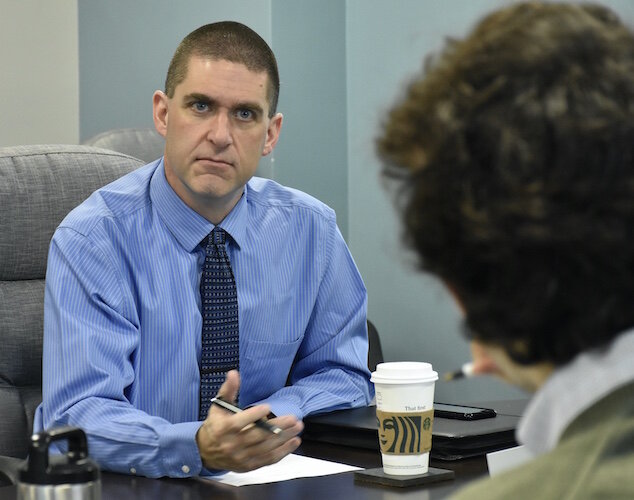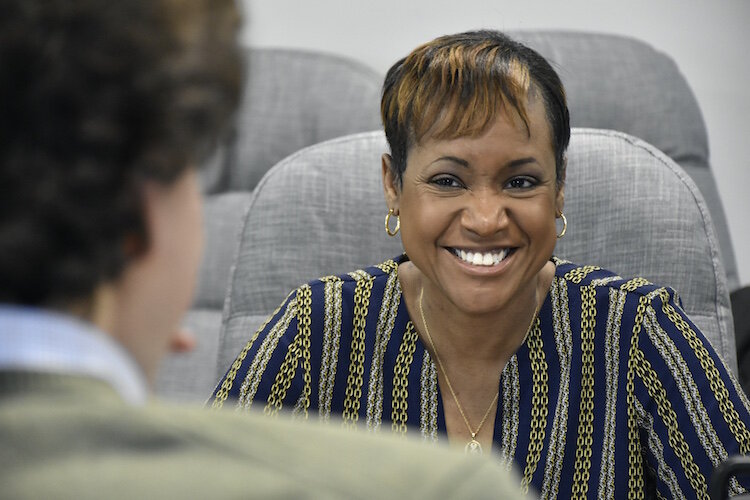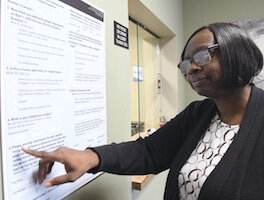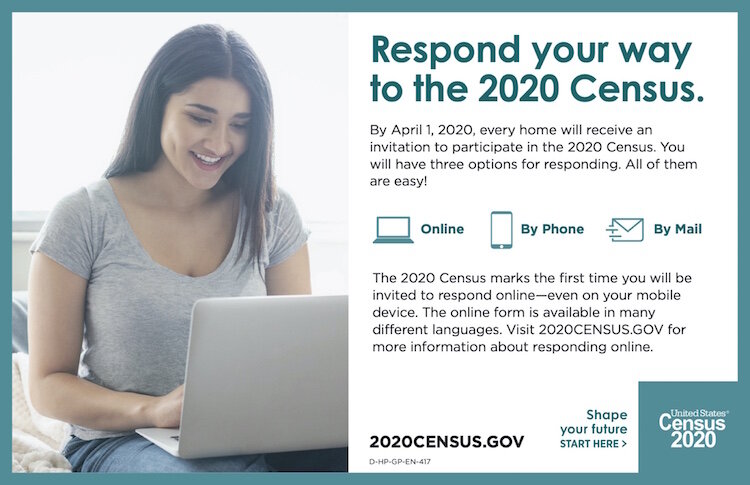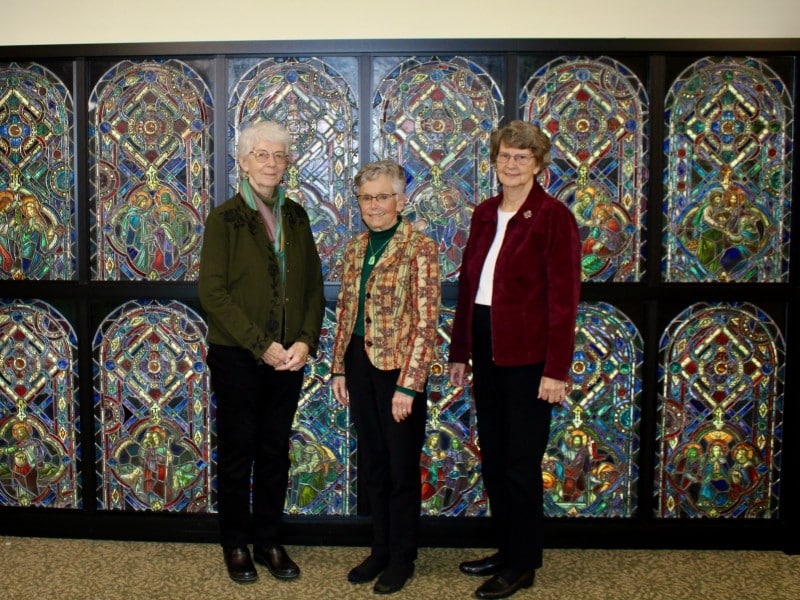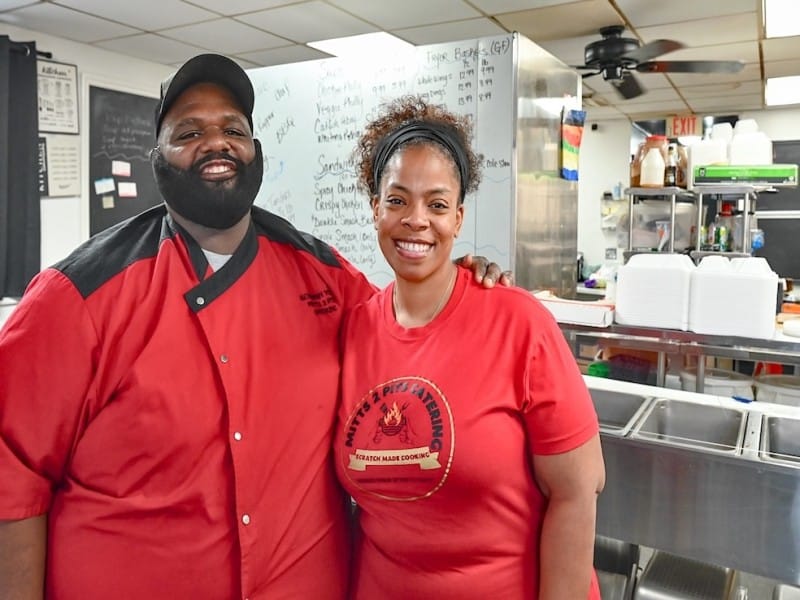You count. Stakes are high for Battle Creek in 2020 Census
What's at stake? Without an accurate count of Battle Creek's population, it would be difficult to obtain state and federal money that helps people every day. A team of nonprofits and others is working on encouraging people to be counted.
Editor’s note: This story is part of Southwest Michigan Second Wave’s On the Ground Battle Creek series.
Millions of dollars in federal funding for the city of Battle Creek and other municipalities across the state of Michigan is riding on the 2020 Census and very little is being left to chance in an effort to ensure that each resident is counted – no matter how young or how old or hard to find.
The magic number is 50,000-plus, says Jacob Schacht, assistant to Battle Creek City Manager Rebecca Fleury.
“The Federal government uses a system called entitlement status. If your population is over 50,000 you get your money straight from the federal government for certain programs such as Community Development Block Grants and the local bus system,” Schacht says. “If your population is smaller the money comes from the state and it’s a competitive grant that you have to apply for on an annual basis for the next 10 years until the next Census count.”
The competitive grant scenario creates more work for municipalities and more uncertainty in the budget planning process for the departments they oversee, Schacht says.

During the 2010 Census the city’s population was 52,347. In 2019, the total population was 51,247 making it the 24th largest city in Michigan, according to estimates from the U.S. Census Bureau.
Given the most recent population count and how close it is to the all-important number of 50,000, Schacht says, “It’s very important that people count themselves.”
Beginning on March 12, residents throughout Michigan will be asked to go online to fill out a Census form that contains less than 10 questions. A small number of households will receive a paper copy of the questionnaire to fill out and return, says Kyra Wallace, President and CEO of the Southwestern Michigan Urban League, which is serving as the Calhoun County Census Hub. The local Hub is one of 13 established in Michigan by the Michigan Nonprofit Association.
These hubs bring together nonprofits that serve populations identified as hard-to-count, such as immigrants, minorities, and the homeless. The Calhoun County Hub has an advisory group that includes representation from the Burma Center; B.C. Pride, representing the LGBTQ community; and VOCES, which represents the Latinx community.
“That way those individuals are at the table so when it came to brainstorming we had people who knew or understood the culture of the populations we are trying to reach,” Wallace says.
“The notion of culture comes into play for immigrants. For them, trust and confidentiality are difficult and it’s very important to them to know where their Census information is going and what it will be used for. If they don’t know, they won’t complete the survey.”
Wallace says the same sentiments are echoed by members of the African American community which “doesn’t trust the government, period. It’s hands-off if they see anything from the government.”
Another consideration is that, “Not everyone has access to a laptop or Wi-Fi,” Wallace says.
Although she says she doesn’t think there is one specific group that is more difficult to reach than another, she cites transiency as an issue with two, the homeless population as well as children age 0-5 whose parents fill out the Census questionnaire for themselves, but don’t go to the next page for each individual in that household to ensure that they’re counted, as being among those hard-to-count groups.
“The MNA (Michigan Nonprofit Association) had the foresight to know that in order to get the count necessary to ensure that Michigan keeps its numbers, they needed to get nonprofits involved,” Wallace says. “They recognized that just having random individuals try to approach those different groups wouldn’t be the most ideal way to convince them that they should complete the Census survey. Who better to make that case and have those conversations than the nonprofits they actually trust that serve them?”
This more focused and intentional outreach is one part of a multi-faceted, multimedia approach that the Michigan Nonprofit Association began developing in 2017 to ensure the most accurate count possible in Michigan.
Joan Gustafson, External Affairs Officer for the MNA, who is leading the organization’s 2020 Census Campaign, says the leadership of the organization realized after the 2010 Census that they needed to begin outreach efforts and raise more money earlier to create greater awareness among all Michigan residents about the importance of filling out and submitting their Census forms.
More than 170 cities and counties in Michigan are participating in the MNA-led Census campaign, Gustafson says.
“The infrastructure we put in place consists of more than 70 organizations statewide that help these hard-to-reach populations,” she says.
A little over $21 million has been raised to fund the MNA’s 2020 Census campaign and the State of Michigan’s Census campaign. The state appropriated a total of $16 million — $6 million of which was appropriated for the MNA for its Nonprofit Campaign and $10 million of which was appropriated for the State of Michigan Campaign. Gustafson said the MNA also raised $5.8 million in private foundation funding for its campaign.
Each of the Census Hubs has been given funds from this pool of money that has in turn been used to provide mini-grants to those nonprofits charged with connecting with hard-to-count populations. This money will be used to create awareness and fund the outreach efforts of those nonprofits.

“The applications came in for the mini-grants and our team went through and awarded them. The Battle Creek Community Foundation in partnership with us sent out the funds,” Wallace says. “We gave out nine mini-grants which ranged from $2,700 to $10,000.” Funding levels differed depending on the activities the nonprofits said in their grant applications that they were going to do and how they were going to do it.
One example is the Food Bank of South Central Michigan will distribute informational materials at its pantries and distribution sites. Another is the Burma Center which will translate Census information into the many different dialects spoken by the city’s Burmese residents and do presentations at churches where they worship. Wallace says some nonprofits asked for computer tablets that they will make available to people so that they can complete their Census form.
“Care Well Services is going to be going to various senior living facilities with tablets and will have a mobile bus that will travel to meet with seniors and provide support with filling out the Census questionnaire,” Wallace says.
The census work complements the work these nonprofits already are doing, Wallace says, adding that they are tailoring their efforts to their individual audiences because a “cookie-cutter approach” won’t work.
“Michigan did fairly well in the 2010 Census,” Gustafson says. “We’re really working on some of the areas that have been extreme challenges for the state.”
So far, more than 250 nonprofits in Michigan have received funding from the state for their Census count work.
While not every state has appropriated money for their Census counts, Michigan is joining states such as California, which has appropriated $90 million for its count efforts.
In addition to its localized efforts, the Michigan Nonprofit Association created a statewide Complete Count Committee in 2018 made up of about 70 organizations including the Chalcedon Community Foundation; the Hispanic Development Corp.; the Michigan Campus Compact; and the Michigan Immigrant Rights Center. These organizations have been advising the MNA on its Census campaign.
Schacht is leading a local Complete Count Committee for Battle Creek. These CCC’s were formed after officials with the Census Bureau recognized that their efforts to advertise the Census would be more likely to succeed if there was a collaboration with local governments and organizations.
Grace Health, Kellogg Community College, and Battle Creek Public Schools are among the local CCC members. Wallace also sits on the CCC as a representative of the Census Hub.
“We decided to have a specific community message. There are some things about Battle Creek that are impacted by Census data so we decided to create a local brand of sorts and put together simple images and a logo that will be used consistently,” Schacht says.
Schacht says bringing the school’s system into the mix makes sense because it’s another way to reach out to families. He says there also will be conversations with area landlords and other word-of-mouth efforts. A communitywide event is scheduled to take place on April 1 – Census Day – to further heighten awareness of the importance of a complete count.
If all of this emphasis on getting a secure and accurate Census count seems like a lot of work, Schacht, Gustafson, and Wallace explain the ramifications of choosing the alternative and doing nothing, hoping that people will fill out the questionnaire without prompting.
From a political standpoint, Wallace says these totals determine how much representation Michigan will have at the federal level. From a local standpoint, she says federal funding supports programs such as free and reduced lunches, improvements to infrastructure, public safety and emergency preparedness, and funding for Calhoun County.
“The big picture is we could be losing thousands and thousands of dollars every year for 10 years for every person not counted,” Gustafson says. “Michigan gets its fair share based on its population.”
Schacht says Michigan receives about $29 billion annually in federal funding. For this reason, he says, “It’s really important that we have all residents counted.”
The self-response rate for Calhoun County in the 2010 Census was about 79 percent. Individuals paid by the U.S. Census Bureau known as paid enumerators began the work of knocking on doors to get those who hadn’t self-responded to fill out the questionnaire. The same thing will happen this time around with enumerators expected to go out in late April to begin connecting with those residents who didn’t self-respond.
“The Census Bureau is hiring thousands and thousands of enumerators nationwide,” Schacht says. “It’s kind of a concern if people aren’t self-responding because that means that several thousand addresses and households aren’t responding. There’s a real possibility for the accuracy to be lower than it is, but we’re still responsible for providing services to the whole town.”
He says data collected through the Census also finds its way into market research conducted by businesses and real estate developers when researching municipalities they may want to locate to.
“Businesses use the data to determine where they’re going to build factories and stores,” Wallace says. “Real estate developers use the Census when deciding where they’re going to build new homes. Schools and hospitals all receive money based on the data. Somewhere you’re going to find something that affects you and then it becomes personal.”
When it comes right down to it, Wallace says, “Ten minutes, less than 10 questions, will affect the next 10 years of your life.”



